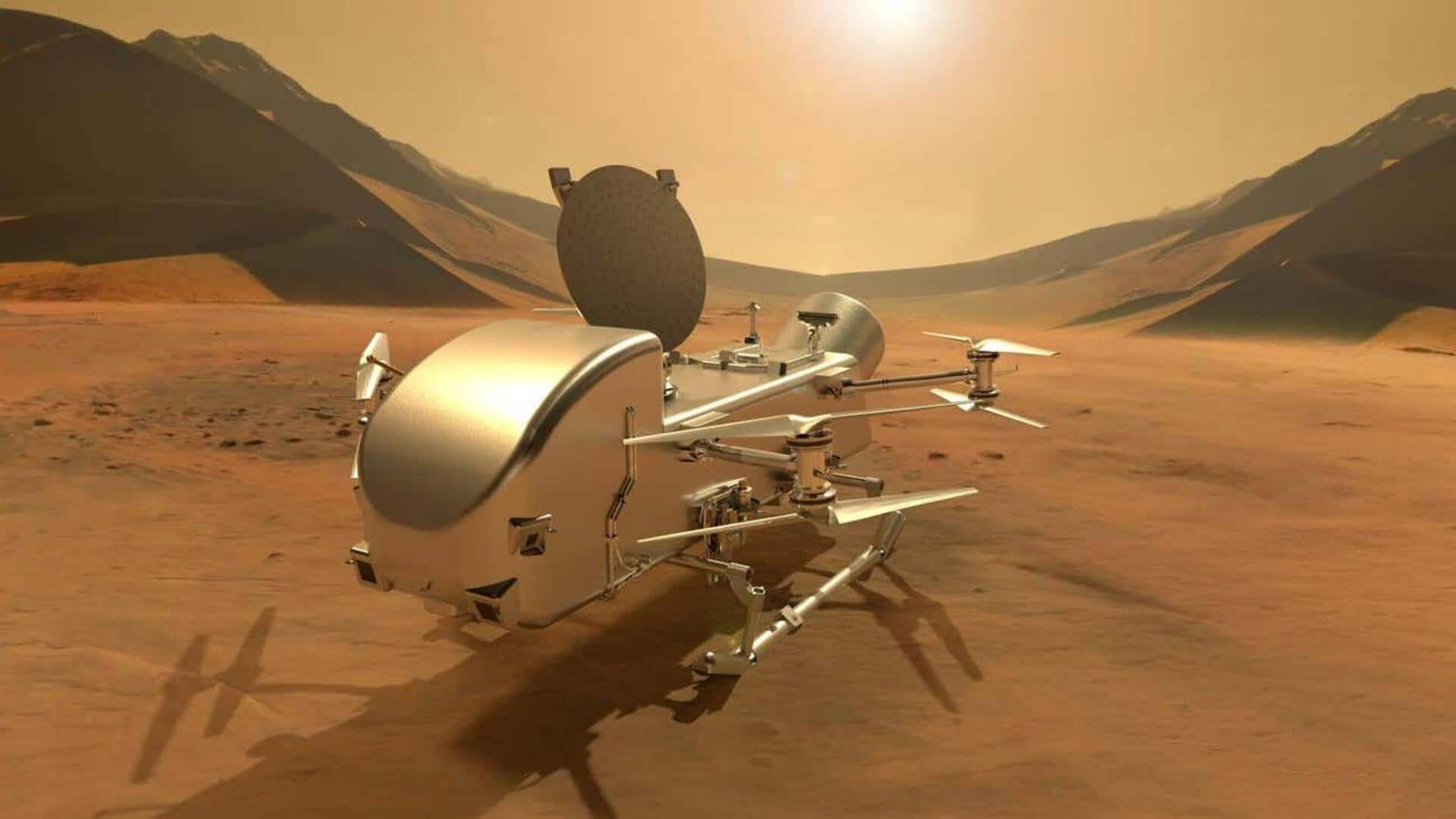
NASA is sending a probe to Saturn's largest moon
What's the story
NASA is gearing up for an unprecedented exploration of Saturn's largest moon Titan with the launch of the Dragonfly mission, set for 2027. This endeavor will utilize a nuclear-powered, car-sized rotorcraft lander to look for potential traces of life on the moon. Titan's surface "is one of the most Earthlike places in the solar system, albeit at vastly colder temperatures and with different chemistry," says NASA.
Insights
Reasons why exploring Titan is important
Titan is unique among the 150 known moons in our solar system. It is the only moon with a thick atmosphere, notes NASA, four times dense when compared to Earth. Titan's atmosphere primarily consists of nitrogen (95%) and methane (5%), with no oxygen present. The combination of methane and nitrogen sparks intricate organic chemistry, making Titan a compelling subject for researchers. Titan's thick atmosphere and low gravity make it a perfect environment for flying, says NASA.
Details
Dragonfly has specific objectives for its mission
Outfitted with cameras, sensors, and sampling devices, the Dragonfly mission will scrutinize Titan's nitrogen-rich atmosphere, which is believed to contain organic substances that may have interacted with liquid water beneath its icy exterior. Previously, scientists had detected a carbon-based molecule called cyclopropenylidene, which hasn't been found in any other atmosphere. This discovery could be an indicator of more complex compounds that could develop or support potential life on Saturn's moon.
What Next?
A look at the mission's progress
To guarantee Dragonfly's resilience in Titan's extreme conditions, mission engineers recently performed test campaigns in supersonic tunnels. A half-scale lander model was also employed to assess the spacecraft's descent and flight capabilities. "All of these tests feed into our Dragonfly Titan simulations and performance predictions," stated Ken Hibbard, Dragonfly mission's systems engineer. "...the mission is coming together piece by piece, and we're excited for every next step toward sending this revolutionary rotorcraft across the skies and surface of Titan."
Facts
Dragonfly is expected to reach its target destination in mid-2030s
Additionally, Titan's landscape bears striking resemblances to Earth's, featuring flowing rivers and lakes of methane, instead of water. Titan's distinctive atmosphere and terrain may conceal intriguing secrets about extraterrestrial life forms, rendering the Dragonfly mission a crucial step in investigating the existence of life beyond Earth. Dragonfly is slated to launch around 2027 and arrive at Titan by the mid-2030s.